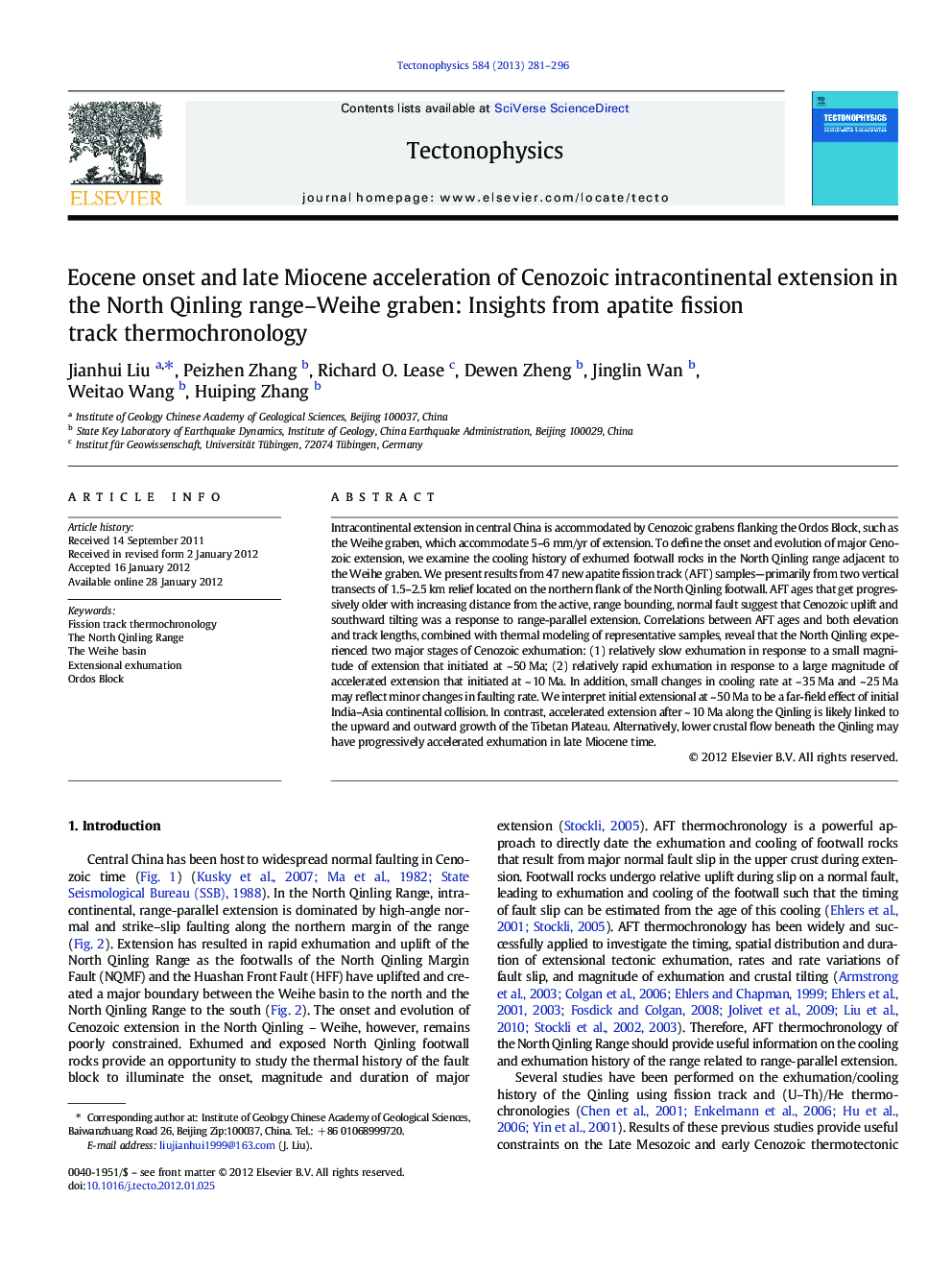| کد مقاله | کد نشریه | سال انتشار | مقاله انگلیسی | نسخه تمام متن |
|---|---|---|---|---|
| 4692454 | 1636801 | 2013 | 16 صفحه PDF | دانلود رایگان |

Intracontinental extension in central China is accommodated by Cenozoic grabens flanking the Ordos Block, such as the Weihe graben, which accommodate 5–6 mm/yr of extension. To define the onset and evolution of major Cenozoic extension, we examine the cooling history of exhumed footwall rocks in the North Qinling range adjacent to the Weihe graben. We present results from 47 new apatite fission track (AFT) samples—primarily from two vertical transects of 1.5–2.5 km relief located on the northern flank of the North Qinling footwall. AFT ages that get progressively older with increasing distance from the active, range bounding, normal fault suggest that Cenozoic uplift and southward tilting was a response to range-parallel extension. Correlations between AFT ages and both elevation and track lengths, combined with thermal modeling of representative samples, reveal that the North Qinling experienced two major stages of Cenozoic exhumation: (1) relatively slow exhumation in response to a small magnitude of extension that initiated at ~ 50 Ma; (2) relatively rapid exhumation in response to a large magnitude of accelerated extension that initiated at ~ 10 Ma. In addition, small changes in cooling rate at ~ 35 Ma and ~ 25 Ma may reflect minor changes in faulting rate. We interpret initial extensional at ~ 50 Ma to be a far-field effect of initial India–Asia continental collision. In contrast, accelerated extension after ~ 10 Ma along the Qinling is likely linked to the upward and outward growth of the Tibetan Plateau. Alternatively, lower crustal flow beneath the Qinling may have progressively accelerated exhumation in late Miocene time.
► Cenozoic uplift and southward tilting was in response to range-parallel extension in the North Qinling Range.
► Relatively slow exhumation in response to a small magnitude of extension that initiated at ~ 50 Ma.
► Relatively rapid exhumation in response to a large magnitude of accelerated extension that initiated at ~ 10 Ma.
► Small changes in cooling rate at ~ 35 Ma and ~ 25 Ma may reflect minor changes in faulting rate.
Journal: Tectonophysics - Volume 584, 22 January 2013, Pages 281–296